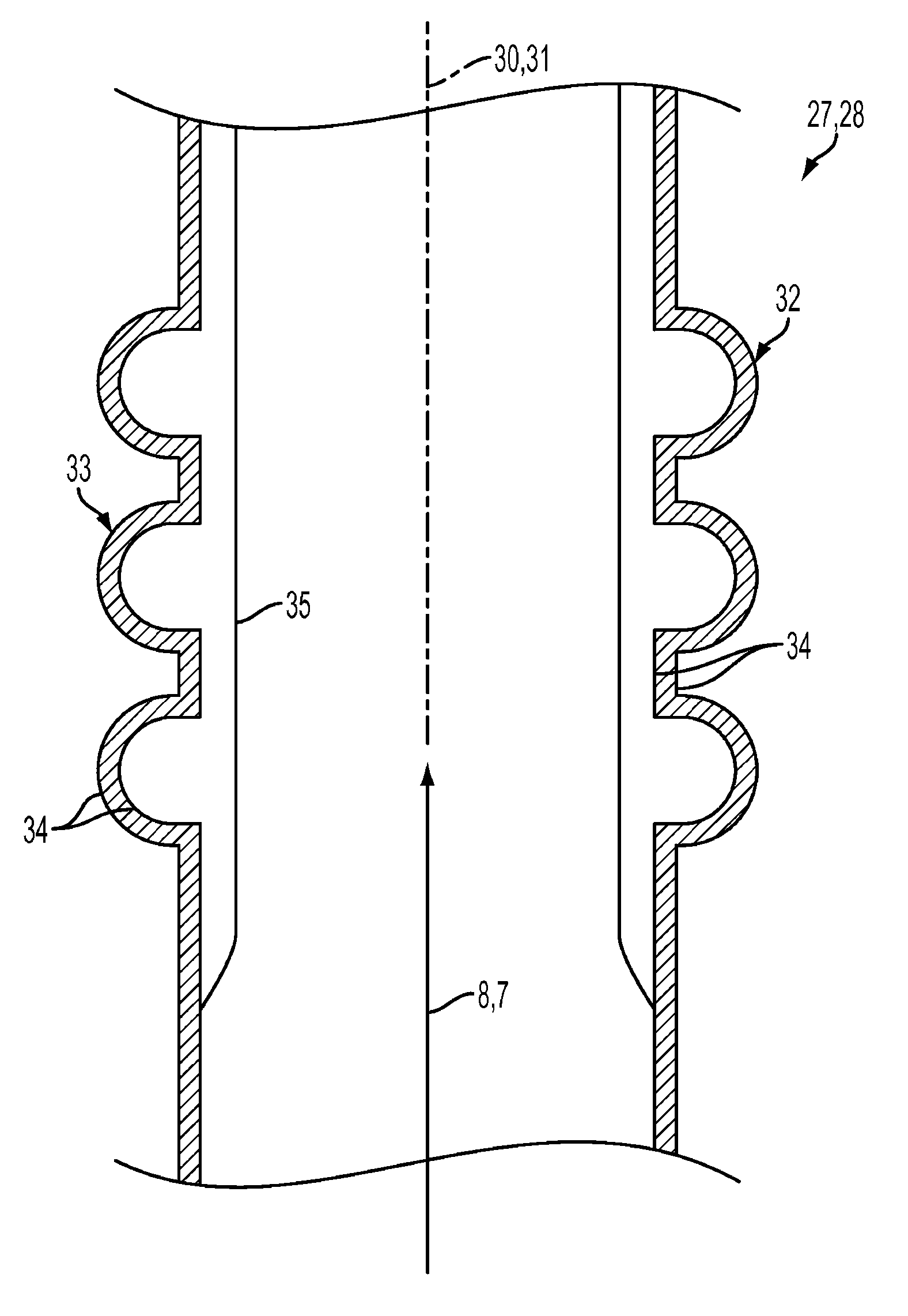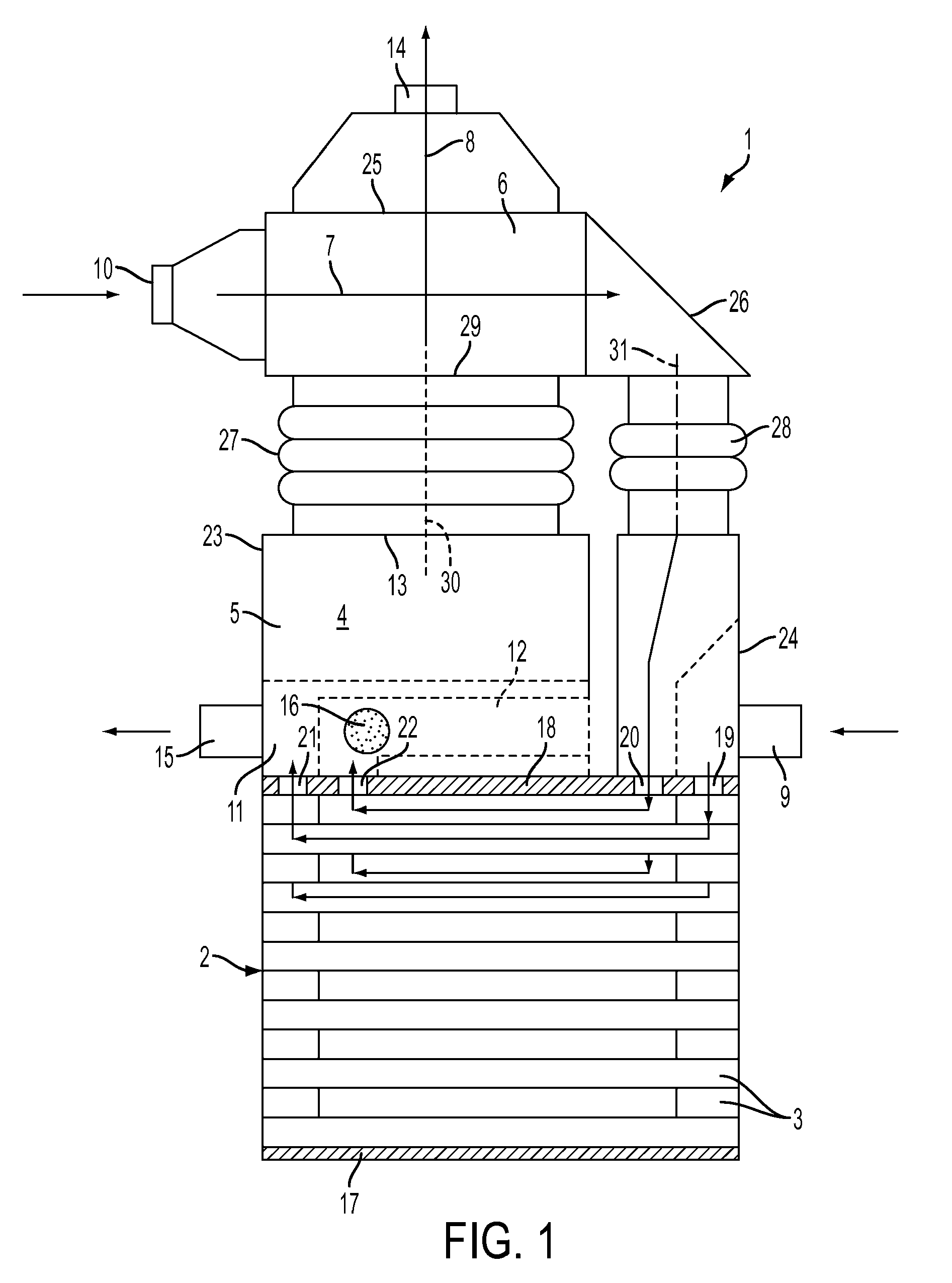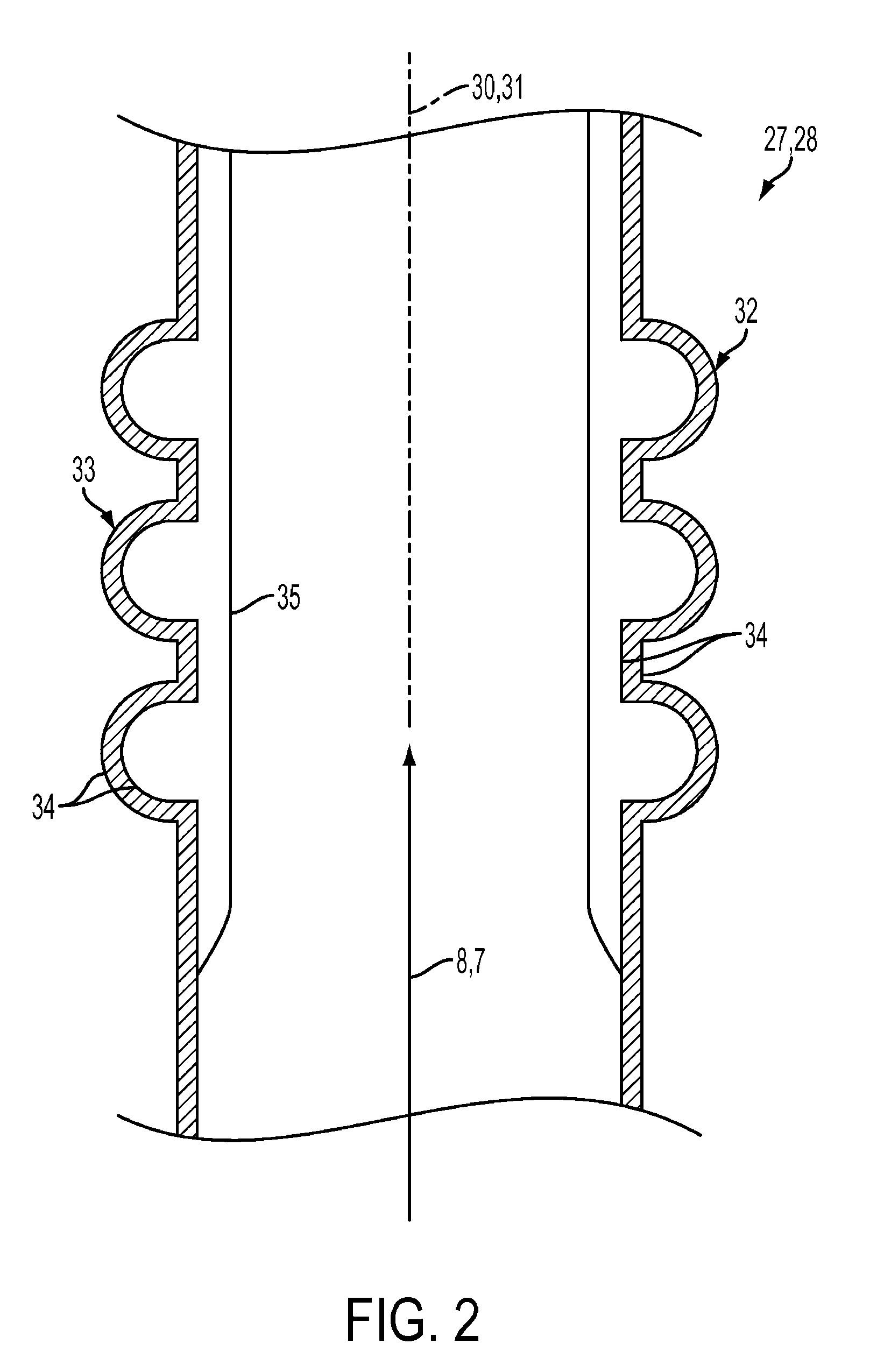Fuel cell module
a fuel cell module and module technology, applied in the field of fuel cell modules, can solve the problems of prolonging service life and correspondingly reducing the achieve the effects of reducing the thermal stress of the fuel cell module, wide range, and high flexural elasticity
- Summary
- Abstract
- Description
- Claims
- Application Information
AI Technical Summary
Benefits of technology
Problems solved by technology
Method used
Image
Examples
Embodiment Construction
[0015]Referring to the drawings in particular, corresponding to FIG. 1, a fuel cell module 1 comprises a fuel cell 2, which is preferably a Solid Oxide Fuel Cell (SOFC). The fuel cell 2 may be composed, e.g., of a plurality of fuel cell elements 3 stacked up on one another. Module 1 has, in addition, a residual gas burner 4, which contains a combustion chamber 5. Furthermore, a heat exchanger 6 is provided, which is integrated in a cathode gas path or air path 7, on the one hand, and in a burner waste gas path 8, on the other hand, in order to couple these paths 7, 8 in a heat-transmitting manner. Paths 7, 8 are coupled with one another in cross current in the example.
[0016]Module 1 has an anode gas inlet 9, via which anode gas or combustion gas or synthesis gas can be fed. The anode gas originates, for example, from a reformer, which generates a hydrogen-containing combustion gas, namely, the anode gas, e.g., from hydrocarbon-containing fuel and air, e.g., by means of catalytic ref...
PUM
| Property | Measurement | Unit |
|---|---|---|
| coefficients of thermal expansion | aaaaa | aaaaa |
| coefficient of thermal expansion | aaaaa | aaaaa |
| electric current | aaaaa | aaaaa |
Abstract
Description
Claims
Application Information
 Login to View More
Login to View More - R&D
- Intellectual Property
- Life Sciences
- Materials
- Tech Scout
- Unparalleled Data Quality
- Higher Quality Content
- 60% Fewer Hallucinations
Browse by: Latest US Patents, China's latest patents, Technical Efficacy Thesaurus, Application Domain, Technology Topic, Popular Technical Reports.
© 2025 PatSnap. All rights reserved.Legal|Privacy policy|Modern Slavery Act Transparency Statement|Sitemap|About US| Contact US: help@patsnap.com



